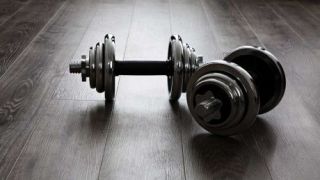
When it comes to the best workout for 35 year old males, there are a few things you should keep in mind. First, your testosterone level is still quite high. Your testosterone level peaks between 16-18 years old. If you take good care of yourself, it will remain high. However, testosterone levels will not have a significant impact on muscle development.
Lifting compound objects
The whole body is targeted by compound lift exercises, and not just one muscle group. They involve stretching the hips and pulling back your shoulders. While older lifters may not make as much progress as a younger lifter, they can still make substantial gains. The key is to ensure correct technique and avoid injuries.
A multi-joint joint compound lift workout is perfect for middle-aged women who are looking to increase their testosterone levels and stay fit. These exercises target almost every muscle group, increase testosterone production, and strengthen aching joints. They are good for your core and can prevent lower back problems.

Rest
There are many things to consider when choosing the right workout for a male 35-year-old. Older men have greater needs for rest and muscle mass. They may require longer breaks between weight sessions. It is also important that you consider the importance of resting in other areas like sleep. Older men often have more responsibilities than younger ones, which means they get less sleep, or sleep of poor quality. To maintain growth hormone levels as well as muscle repair, you need to get 7-9 hours of sleep each nights.
Cardio
The first step in designing a cardio workout for a 35-year-old male is to determine the target heart rate. As a general rule, the target heart rate for an adult is around 220 beats per minute. But, the number will vary from one person to another. If you're over 35, you should aim to reach sixty to seventy percent of your MHR in the first five minutes.
The next step is to incorporate long, short and intermediate distance running into your daily routine. For example you could alternate 400, 800 or 1,000 meter runs. You can also try circuit workouts to increase your fitness level.
Strength training
Strength training for 35-year-old men has many benefits for your health. An older man is more likely than a younger one to retain muscle mass. Muscle loss due to aging is a common problem, but it can be slowed with the proper training. A man aged 35 should train each muscle group 2 to 3 times per week. He should focus on compound movements. He should aim for four sets and eight to 15 reps per exercise. For maximum muscle growth, he should use progressive overload principles.

A strength training regimen for a 35 year-old male should contain eight to ten exercises in each major muscle groups. To achieve maximum results, you should do these exercises two to three days per week. Beginners should start by doing one set of each exercise and gradually increase the repetitions to two or three sets of eight to 12 reps. Once you are comfortable with doing 12 reps of an exercise, consider progressing to higher weights.
FAQ
What should I do if I'm working out?
You shouldn't consume alcohol while working out because it has calories. However, moderate consumption of alcohol (one drink per day) may help improve endurance during workouts. It can also help reduce fatigue and muscle pains caused by intense exercise.
How many hours should I sleep each night?
The amount of sleep that is recommended for each individual depends on their age, gender and needs. Most adults require between 7 and 9 hours of sleep each night. Teenagers and children need approximately 10 hours of sleep per day, although this number decreases with age.
Do I need to eat before working out?
No. You don't have to eat before you start working out. However, if you're hungry after working out, you might want to snack on something light like fruit or yogurt.
Are there any exercises I shouldn't do?
You should always consult with your doctor before starting any new workout routine. There are some people who have medical conditions or injuries that make it difficult to exercise. Certain activities require special equipment and training. Swimming requires you to have a swimsuit and access to the pool.
How exercise and nutrition can help to live a happier life
Exercise is good for your health, weight loss, muscle growth, stress reduction, and overall well-being. Nutrition is vital for energy, mood, sleep, and overall health. If you want to live longer, eat less meat, drink alcohol moderately, avoid smoking, and do regular physical activity.
Statistics
- Globally, 81% of adolescents aged 11-17 years were insufficiently physically active in 2016. (who.int)
- In high-income countries, 26% of men and 35% of women were insufficiently physically active, as compared to 12% of men and 24% of women in low-income countries. (who.int)
- According to the Centers for Disease Control and Prevention, chronic diseases cause 7 out of 10 deaths in the U.S., and treating chronic diseases accounts for 86% of U.S. healthcare costs. (mana.md)
- Physical activity confers the following maternal and fetal health benefits: a decreased risk of pre-eclampsia, gestational hypertension, gestational diabetes (for example, 30% reduction in risk) (who.int)
External Links
How To
How to Burn Belly Fats Quicker
When trying to lose weight, belly fat is often viewed as a problem. But if you think about it, Belly Fat is actually a good thing. Your organs are protected from being damaged by excess belly fat. Let's look at how to rapidly lose belly fat.
Stress and inactivity are two of the major factors that cause us to store body fat. Stress makes us feel hungry constantly because it stimulates the production of the cortisol hormone. Cortisol levels are increased by insulin. Insulin then stores excess calories as fat. The release of adrenaline from our bodies causes increased appetite. These extra calories can also be reduced by exercise
There are many ways you can reduce belly fat. All of these methods can be used, depending on your budget. Here are some quick tips to get rid of belly weight.
-
You can eat less. Don't eat three large meals at once. This will result in fewer calories.
-
Get plenty of water. Water flushes out toxins and keeps you hydrated. Also, drinking water before every meal will keep you feeling full longer so you won't overeat.
-
Avoid eating unhealthy snacks. If you're looking for quick fixes, snack foods like chips, cookies, candies, etc. This might be tempting. These fattening treats are best avoided as they have too many empty calories and sugar. Choose healthy options like whole grains, fruits, vegetables, nuts, seeds and nuts.
-
At least three times per semaine, do strength training. Strength training builds muscle mass which burns more calories even while resting. Strengthening your bones, muscles as well ligaments, joints, tendons, heart and lungs.
-
Regularly walk or stretch. Stretching increases flexibility and mobility. It also reduces back pain. Walking is great for burning calories, especially brisk walking for 30 minutes.
-
Reduce alcohol intake. You should cut down on alcohol consumption. It adds no nutritional value to your diet.
-
Lose weight gradually. Finding out your current weight is the first step in losing weight. Add 5%-10% of your total bodyweight to calculate your ideal size. Once you have determined your ideal weight, you can start to reduce your calorie intake by 500-1000 calories per day until you reach it.
-
Avoid processed foods. These foods are high on sugar, salt, and additives. These processed foods are often convenient, but they lack enough nutrients for good health.
-
Don't skip breakfast! Breakfast improves concentration, memory, energy, and stamina. Protein (like eggs), fiber and complex carbohydrates (like oatmeal) should be included in breakfast.
-
Have regular bowel movements. Constipation and irregularity can cause gas and bloating. Increase your fiber intake and drink lots of water.